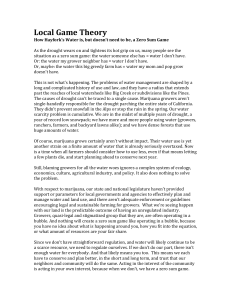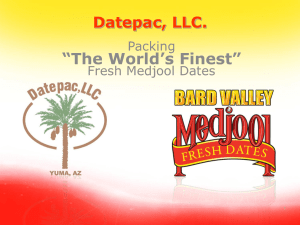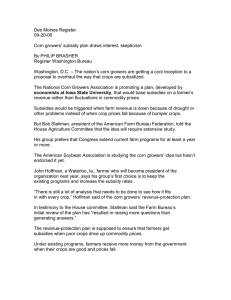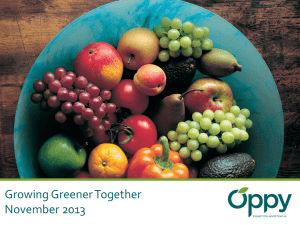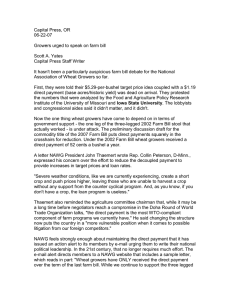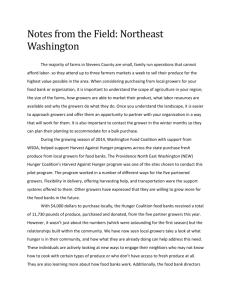National Census 2001 Amenity
advertisement
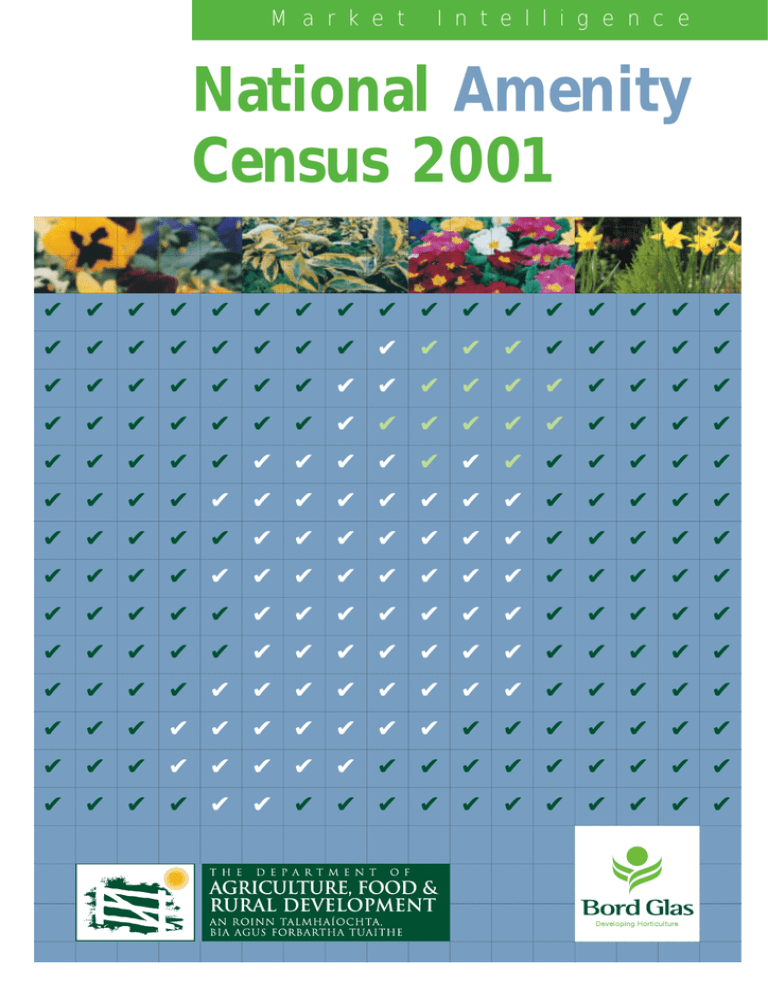
M a r k e t I n t e l l i g e n c e National Amenity Census 2001 ✔ ✔ ✔ ✔ ✔ ✔ ✔ ✔ ✔ ✔ ✔ ✔ ✔ ✔ ✔ ✔ ✔ ✔ ✔ ✔ ✔ ✔ ✔ ✔ ✔ ✔ ✔ ✔ ✔ ✔ ✔ ✔ ✔ ✔ ✔ ✔ ✔ ✔ ✔ ✔ ✔ ✔ ✔ ✔ ✔ ✔ ✔ ✔ ✔ ✔ ✔ ✔ ✔ ✔ ✔ ✔ ✔ ✔ ✔ ✔ ✔ ✔ ✔ ✔ ✔ ✔ ✔ ✔ ✔ ✔ ✔ ✔ ✔ ✔ ✔ ✔ ✔ ✔ ✔ ✔ ✔ ✔ ✔ ✔ ✔ ✔ ✔ ✔ ✔ ✔ ✔ ✔ ✔ ✔ ✔ ✔ ✔ ✔ ✔ ✔ ✔ ✔ ✔ ✔ ✔ ✔ ✔ ✔ ✔ ✔ ✔ ✔ ✔ ✔ ✔ ✔ ✔ ✔ ✔ ✔ ✔ ✔ ✔ ✔ ✔ ✔ ✔ ✔ ✔ ✔ ✔ ✔ ✔ ✔ ✔ ✔ ✔ ✔ ✔ ✔ ✔ ✔ ✔ ✔ ✔ ✔ ✔ ✔ ✔ ✔ ✔ ✔ ✔ ✔ ✔ ✔ ✔ ✔ ✔ ✔ ✔ ✔ ✔ ✔ ✔ ✔ ✔ ✔ ✔ ✔ ✔ ✔ ✔ ✔ ✔ ✔ ✔ ✔ ✔ ✔ ✔ ✔ ✔ ✔ ✔ ✔ ✔ ✔ ✔ ✔ ✔ ✔ ✔ ✔ ✔ ✔ ✔ ✔ ✔ ✔ ✔ ✔ ✔ ✔ ✔ ✔ ✔ ✔ ✔ ✔ ✔ ✔ ✔ ✔ ✔ ✔ ✔ ✔ ✔ ✔ ✔ ✔ ✔ ✔ ✔ ✔ ✔ ✔ ✔ ✔ ✔ ✔ ✔ ✔ ✔ ✔ ✔ ✔ INTRODUCTION The 2001 Amenity Census combines the results of censuses in three sub-sectors: nursery stock, bedding/pot plants and bulb production. Results from the nursery stock census have been published previously (The Nursery Stock Industry in Ireland, 2000: M.J. Maher et al) and the key findings are summarised here in order to provide a single document that covers three sectors within the amenity industry. Nursery stock data is for the year 2000 while data for the bedding/pot plants sector and for the bulb sector is for the year 2001. The censuses were carried out by inspectors of the Department of Agriculture, Food and Rural Development (DAFRD). Bord Glas, DAFRD and Teagasc wish to thank all the growers who participated. HARDY NURSERY STOCK SECTOR The 2000 census of the hardy nursery stock sector indicates strong growth since the previous census of 1997: • sector value rose 29% to €30.6 million in 1999* • production area increased 19% to 465 hectares in 2000 (1,149 acres). • employment rose 7% to 972 full-time equivalent jobs in 2000 * All value data refers to 1999 and 1996 as the census asks growers to provide figures for the most recent year in which full year figures are available. The census recorded a total of 222 growers, broadly unchanged from the 1994 and 1997 censuses. Tipperary has the largest production area with 145 hectares. However, Kildare contributes the most to overall sector sales, due largely to its having the highest area of containerised plants (which typically have a higher value than field plants). The sector is dominated by a small number of large growers. There are a total of 29 nurseries with sales in excess of €253,940 (IR£200,000). These nurseries represent only 13% of all nurseries, but they account for 64% of the sector's total sales. 'Containerised shrubs for retail sale' is the single biggest category in value terms. The value of this category is estimated to be €11.6 million, representing over one-third (38%) of the sector value. 'Containerised herbaceous plants' are the joint second most important plant category with a sales value of €4.0 million. 'Standard and half standard trees' also have a sales value of €4.0 million. The production area for 'standard and half standards' has doubled since the previous census. The sector's export sales are valued at €5.4 million, with ornamental shrubs being the biggest category. Imports by nurseries are valued at €5.3 million, with liners being the biggest category. Nursery stock growers say that the growth in the economy has created a difficulty in attracting and retaining qualified staff. This was the single most often mentioned barrier to future expansion in 2001. DAFRD estimates the value of the hardy nursery stock sector for 2001 at €32.4 million. BEDDING AND POT PLANTS SECTOR There are a total of 75 bedding and pot plant growers in 2001. Cork has the highest number of growers with 16. Most other growers are based in Leinster. Most growers produce a wide variety of bedding plants. In this category, growers rate pansies, Impatiens F1 Hybrids and Petunias as their most important species. Most growers also produce a wide variety of patio and basket species, with Surfinia being rated the most important plant by far. Primroses are the most widely grown pot plant. Output from the sector is mostly sold through garden centres. Only four growers say they export any of their produce. A majority (72%) do not use any type of mechanisation. However, 37% say they will purchase machinery over the next two years and 47% say they will increase production over the same period. 1 As was the case among nursery stock growers, the most commonly mentioned barrier to future expansion is the availability of suitable staff. BULBS AND CUT FLOWERS SECTOR The bulb sector is worth an estimated €1.5 million. The sector consists of bulb growing for the wholesale market (€1.2 million) and harvesting flowers from the bulb production area (€0.3 million). Seventy-two percent of the sector's output is exported. There are a total of 184 hectares of land involved in the bulb sector. Of this figure, 81 hectares of bulbs were harvested in 2001. Growing cycles result in only half of the area being harvestable in a given year. Flowers were harvested from 51 hectares. The census recorded a total of 23 bulb growers. Employment tends to be on a part-time basis. Only 14 people are employed full-time but 49 full-time equivalent jobs are provided by the sector. Bulb production is dominated by Narcissi (i.e. daffodils). There are only two growers producing tulips. Golden Harvest is the single most widely produced Narcissi variety. However, 50 different Narcissi varieties were recorded among the 23 growers. The figures provided in this document are based on the best information available to Bord Glas/DAFRD at this point in time. For convenience many of the figures have been rounded up. For Further Information Contact: Alice McGlynn, Development Marketing Executive, Bord Glas, Commercial House, West End Commercial Village, Blanchardstown, Dublin 15. Tel: 01 803 0398 Fax: 01 803 0399 E-mail: info@bordglas.ie Website: www.bordglas.ie 2 HARDY NURSERY STOCK SECTOR Chart 1 Production Area 1994–2000 (Hectares) 500 300 353 27 120 89 99 200 266 100 304 227 0 1994 1997 Outdoor containerised Open Field Source: DAFRD/Teagasc 400 465 41 391 37 2000 Greenhouse • The total production area for hardy nursery stock in 2000 is 465 hectares (1,149 acres). Of this, 304 hectares (65%) is open field production of hardy nursery stock, 120 hectares (26%) is outdoor containerised production and 41 hectares (9%) is greenhouse production (i.e. glasshouses and fixed polythene tunnels). • The total production area has increased steadily since 1994. The 2000 figure represents an increase of 32% since 1994 and 19% since 1997. Containerised plants show the highest increase in production area since 1997 (up 35%). However, the 1997 figure was a decrease on the 1994 figure and the overall increase since 1994 is 21%. Production in greenhouses has increased by 51% since 1994, albeit from a low base. Chart 2 Sector Value 1996–1999 (€ million) 50 30 20 10 €23.8 €30.6 1996 1999 0 Source: DAFRD/Teagasc 40 Note: industry value data refers to 1999 and not 2000 (and 1996 not 1997) as the census asks growers to provide figures for the most recent year in which full year figures are available. • The total value of the hardy nursery stock sector in 1999 is estimated by growers to be €30.6 million, a 29% increase since 1996. 3 Chart 3 Value by County 1999 (€ million) 10 6 4 €9.7 €7.5 €4.4 2 €4.4 €2.6 €2.0 Dublin Kilkenny 0 Kildare Tipperary Cork Source: DAFRD/Teagasc 8 Other counties • Kildare is the most important county in terms of output value. Twenty-five Kildare nurseries have a combined production area of 73 hectares and a combined output value of €7.5 million (see Table 1.1 in Appendix). Kildare's top ranking for output value is due largely to its having the highest area for containerised plants (which have a much higher output value per hectare than open field production). • Tipperary and Cork both have an output value of €4.4 million. Tipperary's seventeen growers have the largest combined production area (145 hectares) and the second largest production area for containerised plants (13 hectares). • The top five counties in terms of output value (i.e. Kildare, Cork, Tipperary, Dublin and Kilkenny) together account for 68% of the total sector value. Chart 4 Sector Employment 1994–2000 912* 972* 723 672 545 665 719 1994 1997 2000 1500 1000 715* 478 500 0 Full-time Part-time * Full-time equivalents • The hardy nursery stock sector employs 719 people full-time and 672 people part-time. In 'full-time equivalent' terms (i.e. converting the part-time jobs into the number of full-time jobs they would represent), the sector employs 972 people. • Employment has increased significantly since 1994. The number of full-time jobs represents a 32% increase since 1994 and an 8% increase since 1997. Full-time equivalent jobs are up 36% since 1994 and 7% since 1997. The number of people employed on a part-time basis is up 41% since 1994, but has fallen by 7% since 1997. 4 Source: DAFRD/Teagasc 2000 Chart 5 Value of Output by Size of Nursery 1999 80% Source: DAFRD/Teagasc 60% 40% 64% 50% 20% 37% 26% 13% 10% 0% Small Medium Percent of nurseries Large Percent of industry value • Nurseries were classified into three sizes based on the value of their sales, as follows: • small – sales of less than €63,485 (IR£50,000) • medium – sales between €63,485 and €253,940 (IR£50,000 to IR£200,000) • large – sales over €253,940 (IR£200,000). • A breakdown of industry value by size of nursery shows that a small number of large nurseries contribute the majority of sector value. The twenty-nine nurseries defined as 'large' represent only 13% of all nurseries but account for 64% of sector production value. In contrast, the 111 nurseries classified as 'small' represent half of the total number of nurseries but contribute only 10% of sector production value. Chart 6 Production Area 2000 (Hectares) 19 Conifers 0 278 9 28 31 Other ornamentals 24 Source: DAFRD/Teagasc 254 Deciduous trees 87 50 118 100 Open Field 150 200 250 300 Outdoor containerised Note: information on the production area of plants grown in greenhouses was not collected. • There are 278 hectares of deciduous trees in production in nurseries in 2000. Most of this area (254 hectares) is open field production with only 24 hectares being outdoor containerised production. • 'Standard and half standard trees' are by far the biggest category of deciduous trees, with 137 hectares in open field production and 13 hectares in outdoor containerised production. The other commonly grown trees are 'whips and feathered trees' (40 hectares in open field production and 7 hectares in outdoor containerised production) and 'semi-mature trees' (39.4 hectares in open field production and 0.4 hectares in outdoor containerised production). • Production of 'standard and half standard trees' has risen significantly since 1994. Open field production has more than doubled while outdoor containerised production has more than tripled (see Table 1.2 in Appendix). Open field production of 'semi-mature trees' has increased 77% since 1994. • There are 28 hectares of conifers in production in 2000. This category has declined somewhat since 1994 (see Table 1.2 in Appendix) • 'Ornamental shrubs for retail sale' are the biggest category within the 'other ornamentals' category (see Table 1.2 in Appendix). Production is mostly containerised and has risen 29% since 1994. Roses are also included in 'other ornamentals'. Rose production is mostly open field production and has remained stable since 1994. 5 Chart 7 Value of Plants Grown 1999 (€ million) €5.3 Deciduous trees €2.6 €7.9 Source: DAFRD/Teagasc €0.4 €1.4 €1.8 Conifers Other ornamentals €1.0 €20.0 0 5 €20.9 10 15 20 25 Outdoor containerised Open Field Note: information on the value of plants grown in greenhouses was not collected. • The vast majority of sector value is accounted for by outdoor containerised production. Though outdoor containerised production represents only a fraction of the production area (see Hardy Nursery Stock Chart 6) it accounts for 78% of the sector value. • Outdoor containerised 'shrubs for retail sale' is the single biggest category in value terms (see Table 1.3 in Appendix). The value of this category is estimated to be €11.6 million, representing over one-third (38%) of the total sector value. Also included in 'other ornamentals' are outdoor containerised 'herbaceous plants' which contribute €4.0 million in sales. • Within the deciduous trees category, 'standard and half standards' contribute €2.6 million from open field production and €1.4 million from outdoor containerised production. Chart 8 Exports and Imports by Market 1999 (€ million) Imports €0.2 €1.3 0 €4.0 2 Northern Ireland €0.7 €5.4 €5.3 4 Great Britain 6 Continental Europe/Other • Irish nurseries export €5.4 million worth of plants and import €5.3 million. • Exports are predominently to Northern Ireland and Great Britain. The main development in exports has been the growth in exports to 'other' countries (mostly continental Europe) which are valued at €0.7 million (see Table 1.4 in Appendix), from almost nothing in 1996. • Imports are mostly sourced from the Netherlands (€3.1 million, see Table 1.5 in Appendix). 6 Source: DAFRD/Teagasc €2.5 €2.2 Exports Chart 9 Exports and Imports by Plant Type 1999 Hardy Nursery Stock Exports (% of €5.4 million Exports) Hardy Nursery Stock Imports (% of €5.3 million Imports*) Seed Transplants 15% Other 26% Shrubs 15% Shrubs 39% Half Standard 20% Source: DAFRD/Teagasc Source: DAFRD/Teagasc Liners 15% Half Standard 15% Other 26% Liners 29% * Imports to hardy nursery stock growers only. Imports by other sectors (e.g. retailers) not included. • 'Ornamental shrubs' are the biggest single export category. Exports of 'ornamental shrubs' in 1999 are valued at €2.1 million (representing 39% of total exports) and are sold mostly to Great Britain. • 'Standard and half standard trees' are the next largest category, having more than doubled in value since 1996 to €1.1 million. Almost half of this figure (€0.5 million) is represented by exports to continental Europe, which were almost non-existent in 1996. • 'Liners' account for 15% of exports and are sold mostly to Great Britain. • The 'other' category includes 'herbaceous plants' which have an export value of €0.4 million, selling mostly to Northern Ireland. • The biggest category of imports in 1999 is 'liners'. Irish nurseries imported €1.5 million worth of 'liners' in 1999, mostly from Great Britain and the Netherlands. • Imports of 'ornamental shrubs', 'tree transplants from seed' and 'half-standards' are each valued at €0.8 million. 'Ornamental shrubs' and 'tree transplants from seed' are sourced mostly from the Netherlands while 'half-standards' are sourced from the Netherlands and Great Britain. • When asked about the reason for importing most growers indicated that the plants are not available in Ireland (see Table 1.6 in Appendix). However, cheaper price and better quality were also mentioned, indicating that a more competitive offering by Irish nurseries might reduce future imports. Chart 10 Barriers to Future Expansion 2000 None mentioned 54% Lack of suitable staff 23% 10% Access to land Grants/planning Production costs Low prices/profitability Lack of marketing expertise 0% Source: DAFRD/Teagasc Access to capital 7% 5% 4% 4% 3% 20% 40% 60% • Growers were asked if they are encountering any barriers to expansion and, if so, to indicate what they are. Over half (54%) did not indicate any barriers. The most commonly mentioned barrier was the availability of suitable staff. Growers say that the expansion of the Irish economy has made it difficult to attract staff given sector salary levels. This issue was mentioned by one-quarter (23%) of growers. Access to finance and the price and availability of land are other sector obstacles. 7 BEDDING AND POT PLANTS SECTOR Chart 1 Number of Growers by County 2001 25 20 15 21 10 16 11 5 9 7 6 5 Wexford Wicklow Louth 0 Cork Dublin Meath Other • In 2001, there are 75 growers of bedding and pot plants. Cork has the highest number of growers at 16 (21% of all growers). The remaining top five counties are all in Leinster, reflecting the importance of proximity to the Dublin market. Nevertheless, there is a reasonable degree of geographical spread with 21 growers (28% of all growers) located in counties outside of the top six (see Table 2.1 in Appendix). • Sector value was not included in this census. However, DAFRD estimates the value of bedding plants at €6.1 million and pot plants at €5.9 million for 2001. Chart 2 Most important Bedding Species 2001 34% Pansy Impatiens F1 Hybrids 20% Petunia 20% Lobelia 7% Begonia semperflorens 7% Marigolds 6% Geranium F1 Bedding 3% Alyssum 3% 0% 23% 37% 27% 23% 7% 56% 51% 31% 23% 11% Number of Growers 56% 68 69 34% 65 30% 66 28% 67 58 14% 61 10% 10% 66 20% Most important 30% 40% 50% 60% 2nd or 3rd mention • The survey provided growers with a list of bedding and pot plants and asked them to indicate which plants they grew and to rank them in order of importance. • For bedding plants, growers tend to grow most of the 21 plants listed in the survey (see Table 2.5 in Appendix). Petunias, pansies, marigolds, Begonia semperflorens, Impatiens F1 Hybrids, Lobelias, dahlias, Ageratum and Salvia are all grown by at least four-fifths (80%) of growers. • Pansies are the most important species with one-third (34%) ranking them as the most important species and over a half (56%) ranking them in their top three most important species. • The next most important species are Impatiens F1 Hybrids and Petunias, both rated by 20% as their most important species, and by 56% and 51% respectively as one of the top three most important species. 8 Chart 3 Most important Patio/basket Species 2001 52% Surfinia 23% Zonal geranium Fuchsia Trailing Petunia 21% 13% 20% 59 58 32% 56 25% 24% Bacopa 54 51% 25% Ivy leafed geranium 45% 23% 30% 6% 73% Number of Growers 69 60 24% Verbena 1% 11% 13% 65 13% 13% 58 Bidens 0% 20% 40% 60% Most important 80% 2nd or 3rd mention • For patio and basket plants most growers also grow most of the 15 plants listed in the survey, though with a somewhat lesser frequency than for bedding plants. Surfinia, Verbena and Bacopa are all grown by at least four-fifths (80%) of growers (see Table 2.6 in Appendix). • Surfinia is clearly the most important patio/basket species. One-half (52%) of growers say it is their most important patio/basket species and three-quarters (73%) list it as one of their top three most important species. • The other important patio/basket species are zonal geranium, fuchsia, trailing Petunia, ivy leafed geranium and Bacopa. Chart 4 Most important Pot Plant Species 2001 Number of Growers 68% Primroses Chrysanthemums 14% Poinsettias 19% Cyclamen 22% 0% 27% 14% 22% 89% 40 21 41% 14 32% 22% 20% 12 40% First mention 60% 80% 100% 2nd or 3rd mention • Pot plants are grown much less commonly than are bedding and patio/basket plants. Primroses are the most widely grown pot plants, grown by 40 of the 75 growers (53%). Chrysanthemums are grown by 21 growers (28%), poinsettias by 14 growers (19%) and Cyclamen by 12 growers (16%, see Table 2.7 in Appendix). • Most growers rank primroses as being their most important pot plant (for many growers they are the only pot plant grown). However, seven of the fourteen growers growing poinsettias say they are their most important pot plant. 9 Chart 5 Market Channels for Output 2001 Retail: supermarkets 18% Direct/ own garden centre 15% Wholesale 9% Retail: garden centres 42% Retail: DIY 16% • Over half (57%) of grower output is sold through garden centres, of which 15% is sold through the growers own garden centre and 42% through other garden centres. The other three market channels are supermarkets, DIY and wholesale, which account for 18%, 16% and 9% respectively of grower output. • Most growers produce for the domestic market only. Only 4 of the 75 growers (5%) indicated that they exported any of their produce (see Table 2.8 in Appendix). Chart 6 Area of Glasshouses and Tunnels 2001 (Hectares) 20 15 18 4 10 5 6 14 4 2 Tunnel area 0 Glasshouse area Heated Not Heated • The 75 growers have a combined glasshouse area of 18 hectares (44 acres) and a combined polythene tunnel area of 6 hectares (16 acres). • Most of the glasshouse area is heated while most of the polythene tunnel area is unheated. 10 Chart 7 Mechanisation Used 2001 None 72% Potting machine 12% Seeder 11% Tray filler 8% Conveyor 5% 7% Other 0% 20% 40% 60% 80% • Almost three-quarters (72%) of growers do not use any form of mechanisation. This is because most work is done by direct labour up to a certain nursery size. • Among those using machinery, the most common machines are potting machines (used by 12% of growers), seeders (used by 11%), tray fillers (used by 8%) and conveyers (used by 5%). Chart 8 Nursery Development Projections 2001 Increased use of machinery over last 5 years 30% Will purchase machinery over next 2 years 37% Will increase production over next 2 years 47% 0% 10% 20% 30% 40% 50% • Growers indicate that there has been little change in usage of machinery in recent years. Only 30% of growers say they have increased usage of machinery over the last five years. Regarding future plans, 37% say they will increase usage of machinery over the next two years. • One-half (47%) of growers say they will increase production over the next two years. Chart 9 Main Barriers to Future Nursery Expansion in 2001 39% Availability of suitable staff Overhead costs 35% 11% 21% Access to capital 5% Access to land Lack of markets Lack of research 14% 21% 11% 14% 9% 20% 8% 11% Poor weather 15% Lack of profitability 3% Lack of Advice 2% 9% 11% 0% 74% 32% 26% 24% 23% 20% 18% 18% 20% 40% First mention 60% 80% 2nd or 3rd mention • Growers say that the 'availability of suitable staff' is the biggest barrier to future expansion. Thirtynine percent (39%) rank it as the most important barrier while 74% rank it as one of their top three barriers. This factor far outranks any other barrier to expansion. 11 BULBS AND FLOWERS SECTOR Chart 1 Bulb Production Area (Hectares) 2001 200 184 150 103 100 50 81 51 0 Bulbs Narcissi Flowers Harvested One year old crop • In 2001, a total of 184 hectares (455 acres) of land is in bulb production. Of this, 81 hectares was harvested for bulbs in 2001 while the remaining 103 hectares are first year crop (for harvesting in 2002). • From this production area for bulbs, flowers were harvested from 51 hectares in 2001. Chart 2 Numbers of Growers & Employment 2001 60 50 40 30 49 20 10 0 23 14 Growers Full-time employees Full-time equivalents* * Part time employment aggregated to the number of full-time jobs they would represent. • The bulb sector consists of 23 bulb growers with 21 growing Narcissi (i.e. daffodil) bulbs only, one growing tulip bulbs only and one growing both Narcissi and tulip bulbs. • Fifteen of the 23 bulb growers harvested flowers from their bulb production area (see Table 3.2a in Appendix). • The sector is dominated by Cork with 11 of the 23 growers located in the county (see Table 3.1 in Appendix). There are three growers in Mayo and two growers in both Offaly and Kilkenny. • The sector tends not to be a full time occupation. Only 14 people are employed full-time in bulb growing. However, combining the part-time hours worked indicates that the sector provides 49 'fulltime equivalent' jobs. 12 Chart 3 Bulb Production Area by Varietly 2001 (Hectares) Number of Growers Golden Harvest 22 43 65 15 Dutch Master 11 11 22 11 California 12 10 22 7 Standard Value 6 6 3 12 Other Narcissi 26 Tulips 33 15 59 4 2 0 20 40 60 Harvested 80 One year old crop • In 2001, Golden Harvest is the most commonly grown bulb with 65 hectares. This represents onethird (35%) of the total production area. A total of 15 growers are involved in producing Golden Harvest. • Dutch Master and California are the next most commonly grown varieties, each with a total of 22 hectares in production. There are 11 growers producing Dutch Master and seven producing California. Standard Value is the fourth placed variety with 12 hectares in production among three growers. • In total, the 23 growers produced 50 different varieties of Narcissi (see Table 3.4 in Appendix). Among the most popular varieties in the 'other Narcissi' category are Sempre Avanti, Spellbinder, Carlton, Juanita and Ice Follies. • Two tulip growers harvested 4 hectares of tulips in 2001 (see Table 3.4 in Appendix). Chart 4 Bulb Production Output by Varietly 2001 (Tonnes) Golden Harvest 177 California 171 Standard Value 91 Dutch Master 79 Other Narcissi 691 185 118 868 356 209 111 190 349 391 740 Tulips 26 21 47 0 200 400 Retained 600 800 1000 Sold • The 81 hectares harvested in 2001 (see Bulbs and Flowers Chart 1) produced a total of 2,410 tonnes of bulbs. Golden Harvest bulbs had the highest production tonnage with 868 tonnes, of which 691 tonnes was sold and 177 tonnes was retained for replanting. • California bulbs had the next highest output with 356 tonnes, followed by Dutch Master (190 tonnes) and Standard Value (209 tonnes). The top four varieties account for 69% of the total output. • The value of bulbs differs by variety and for many other reasons, not least being market supply/demand. However, assuming an average value of €508 per tonne (i.e. IR£400*), the value of bulb production is estimated at €1.2 million. * Approximate average value per tonne in 2001. 13 Chart 5 Destination Market for Bulbs 2001 Domestic 28% Export 72% • Seventy-two percent (72%) of the bulbs sold are for the export market (principally to the USA, UK and Netherlands) and 28% are for the domestic market. • All (99.9%) of the bulbs sold are for the wholesale market (see Table 3.2 in Appendix). Chart 6 Narcissi Flower Area Harvested 2001 (Hectares) Number of Growers 11 Golden Harvest 9 9 California 4 7 Dutch Master 6 24 Other Narcissi 0 5 10 4 15 20 25 • As mentioned previously, 15 of the 23 bulb producers harvested flowers from their bulb crops. Golden Harvest, California and Dutch Master are the most common varieties cut as 'stems' for sale, with 11, 9 and 7 hectares respectively of each harvested in 2001. • Among the Other Narcissi category are Gigantic Star, Carlton and Standard Value (see Table 3.3 in Appendix). 14 Chart 7 Narcissi Flower Output 2001 (Bunches of Ten) 325,000 California 283,000 Golden Harvest 192,900 Dutch Master 649,500 Other Narcissi 0 200,000 400,000 600,000 800,000 • A total of 1.45 million 'bunches of ten' Narcissi flowers were harvested in 2001. California had the highest output with 325,000 'bunches of ten', followed by Golden Harvest with 283,000 'bunches of ten'. • The third most produced variety was Dutch Master with 192,900 'bunches of ten'. • The 'other Narcissi' varieties produced a total of 649,500 'bunches of ten'. • As with bulb tonnage, the value of Narcissi flowers differs by variety and other factors. However, assuming an average value of 23.5 cents per bunch of ten (i.e. 18.5 Irish pence*), the value of Narcissi flowers is estimated to be €0.34 million. * Approximate average value per bunch of ten in 2001. Chart 8 Location of Bulb Processing and Plans to Install Facilities 2001 Processing done on farm Plan to install facilities 0% 61% 30% 20% 40% 60% 80% • Fourteen of the 23 growers (61%) say that they process the bulbs (i.e. dry, clean, pack, etc.) on their own farms. The remainder contract this work out to other growers with the necessary equipment. • Seven of the 23 growers (30%) say they plan to install processing facilities themselves. 15 APPENDIX 1: Hardy Nursery Stock Survey Tables Table 1.1 Number of Nurseries, Production Areas (Hectares) and Value by County County Number of Nurseries 2000 Kildare Cork Tipperary Dublin Kilkenny Waterford Limerick Westmeath Wicklow Clare Laois Meath Offaly Galway Wexford Kerry Roscommon Donegal Cavan Mayo Louth Monaghan Carlow Sligo Longford Total 25 31 17 19 10 7 14 10 11 4 5 8 5 7 7 9 3 7 5 5 5 3 2 2 1 222 Outdoor Production 2000 Field Container 32.0 57.4 129.8 11.0 1.6 23.2 4.5 0.7 21.8 0.1 6.5 2.3 2.8 2.5 1.0 2.5 0.0 1.3 0.0 0.3 2.4 0.0 0.0 0.0 0.0 303.7 31.1 6.6 13.2 8.1 7.2 7.1 4.8 5.0 3.6 5.1 6.5 2.8 1.1 2.9 2.5 2.4 1.1 3.1 1.7 0.8 1.7 0.9 0.1 0.3 0.2 120.0 Area Under Protection 2000 10.0 6.0 2.3 4.3 2.3 3.1 1.2 1.4 1.4 2.3 1.0 1.1 0.4 0.9 0.9 0.6 0.2 0.5 0.7 0.3 0.2 0.2 0.1 0.1 0.1 41.4 Net Sales 1999 (€) 7,465,892 4,395,731 4,363,135 2,631,791 2,028,981 1,612,633 1,202,879 1,013,221 799,316 714,841 638,659 631,676 458,362 419,001 365,039 358,690 311,077 305,998 218,388 213,310 208,231 174,000 30,577,776 Table 1.2 Production Area of Outdoor Nursery Stock (Hectares), 1994, 1997 and 2000 Product 1994 1994 Containers 1997 2000 Deciduous trees Transplants Whips and feathered trees Standards/half standards Semi-mature Fruit trees Rootstocks 11.7 47.9 59.1 22.2 3.4 6.2 16.5 69.5 72.1 17.7 8.5 11.3 18.2 40.3 136.6 39.4 11.9 7.2 1.0 2.1 3.8 0.6 0.5 0.0 1.2 3.8 3.3 0.1 1.0 0.0 2.3 7.2 12.6 0.4 1.2 0.3 Conifers Forest transplants Other conifers 22.0 12.4 12.2 13.9 8.2 10.6 0.0 10.3 0.2 7.0 0.1 9.0 Other ornamentals Roses Liners Shrubs for retail Herbaceous1 Other 23.1 2.8 10.1 – 5.8 24.1 1.4 9.7 1.5 7.2 22.3 0.3 6.3 0.6 1.7 0.4 12.6 46.9 – 21.0 1.3 8.0 46.5 10.2 6.0 1.5 6.1 60.3 11.2 7.8 226.7 265.5 303.7 99.2 88.7 120.0 Total 16 Open ground 1997 2000 Table 1.3 Value of the Different Plant Product Categories, 1999 (€) Product Field Containers Total 312,879 642,546 2,643,108 1,473,982 168,324 53,264 371,387 566,003 1,417,516 65,288 113,871 23,362 684,267 1,208,549 4,060,624 1,539,270 282,195 76,626 132,642 311,756 3,297 1,398,269 135,940 1,710,026 689,384 3,709 194,272 16,587 73,239 6,715,692 282,556 1,817,689 11,554,116 4,000,585 2,248,144 23,862,084 971,940 1,821,397 11,748,387 4,017,172 2,321,382 30,577,776 Deciduous trees Transplants Whips and feathered trees Standards/half standards Semi-mature Fruit trees Rootstocks Conifers Forest transplants Other conifers Other ornamentals Roses and rose rootstocks Liners Shrubs for retail Herbaceous Other Total Table 1.4 Estimated Value of Exports by the Nursery Stock Industry, 1999 (€) Product N. Ireland Transplants from Seed Whips, Feathered Trees Half-Standards Semi-Mature Fruit Trees Rootstocks Forest Transplants Conifers – Other Roses Liners Shrubs for retail Herbaceous Other Total 174,598 31,739 323,721 175,123 31,699 0 736 124,699 78,263 167,970 684,704 305,788 120,340 2,219,380 Market destination Gr. Britain 2,256 32,357 260,289 – 20,549 12,697 1,503 – – 596,400 1,248,577 105,207 174,044 2,453,881 Other – 5,142 482,486 – – – – – – 79,039 120,545 14,170 – 701,382 Total 176,853 69,239 1,066,496 175,123 52,249 12,697 2,241 124,699 78,263 843,408 2,053,826 425,165 294,384 5,374,641 Table 1.5 Estimated Value of Imports by the Nursery Stock Industry, 1999 (€) Product Transplants from Seed Whips, Feathered Trees Half-Standards Semi-Mature Fruit Trees Rootstocks Forest Transplants Conifers – Other Roses Liners Shrubs for retail Herbaceous Other Total Origin N. Ireland Gr. Britain Netherlands 0 406 – – – – – 406 444 7,694 667 2,254 3,174 15,046 19,343 22,630 320,339 – 55,896 11,872 896 7,689 137,269 663,158 30,981 21,041 48,162 1,339,276 621,743 410,080 468,894 59,987 77,537 115,550 18,792 67,777 60,946 639,257 548,578 27,173 31,571 3,147,883 Other 114,023 57,977 20,030 – 38,218 108,842 7,169 39,805 2,384 145,475 234,882 11,629 43,994 824,428 Total 755,108 491,093 809,261 59,987 171,651 236,266 26,855 115,677 201,043 1,455,584 815,107 62,097 126,901 5,326,634 17 Table 1.6 Importing Nursery Stock into Ireland – Reasons Cited, 2000 Reasons for importing Not available in Ireland Cheaper price Better quality Better delivery and reliability Plants difficult to grow 18 Responses given 70 25 19 8 2 APPENDIX 2: Bedding and Pot Plant Survey Tables Table 2.1 Number of Growers by County 2001 Number of Growers Percent 16 11 9 7 6 5 3 3 3 2 2 2 2 2 1 1 75 21 15 12 9 8 7 4 4 4 3 3 3 3 3 1 1 100 Hectares Acres Glasshouse area Glasshouse area heated 18 14 44 34 Tunnel area Tunnel area heated 6 2 16 6 Total Greenhouse Area Total Greenhouse Area heated 24 16 60 40 Cork Dublin Meath Wexford Wicklow Louth Carlow Galway Kildare Kilkenny Laois Longford Roscommon Westmeath Mayo Waterford Total Table 2.2 Greenhouse Area 2001 Table 2.3 Greenhouse Heating Systems 2001 Glasshouse Count Percent Hot Air Hot Water Undefined None Total 15 11 18 11 53 28% 21% 34% 21% 104%* Tunnel Count Percent 7 2 9 20 38 18% 5% 24% 53% 100% *some growers stated more than one heating type Table 2.4 Average Area Grown by Crop Type 2001 Hectares Bedding Plants Acreage Patio/Basket Plants Acreage Pot Plant Acreage Foilage Plant Acreage 0.1 0.1 0.0 0.1 Acres 0.275 0.3 0.1 0.2 19 Table 2.5 Bedding Plant Varieties Summary 2001 Number of Growers Petunia Impatiens F1 Hybrids Pansy Lobelia Begonia Semperflorens Marigolds Alyssum Geranium F1 Bedding Antirrhinum Dianthus Dahlias Mesembryanthemum Verbena Nemesia Salvia Tagetes Asters Ageratum Carnation Sweet Pea Stock Total 69 66 68 65 66 67 61 58 56 53 64 37 56 48 60 35 45 53 39 56 48 72 Rank 1 Rank 1–3 Rank 1–5 20% 20% 34% 7% 7% 6% 3% 3% 0% 1% 0% 0% 0% 0% 0% 0% 0% 0% 0% 0% 0% 51% 56% 56% 34% 30% 28% 10% 14% 1% 1% 4% 1% 0% 1% 1% 1% 1% 0% 1% 1% 0% 75% 72% 65% 59% 52% 51% 27% 23% 7% 6% 4% 4% 4% 3% 3% 3% 1% 1% 1% 1% 0% Rank 1 Rank 1–3 Rank 1–5 52% 6% 23% 0% 13% 1% 0% 0% 0% 3% 0% 0% 0% 0% 3% 73% 35% 45% 24% 32% 13% 25% 13% 1% 8% 6% 4% 3% 4% 3% 79% 56% 55% 51% 37% 31% 28% 24% 20% 18% 17% 10% 4% 4% 3% Table 2.6 Patio/Basket Plant Varieties Summary 2001 Number of Growers Surfinia Fuschia Zonal geranium Bacopa Trailing Petunia Verbena Ivy leaf geranium Bidens Brachycome Osteosperm+B119um Diascia Marguerite Helichrysum Trailing Antirrhinum Plectranthus Total 69 59 54 60 58 65 56 58 48 50 45 38 40 20 25 71 Table 2.7 Pot Plant Varieties Summary 2001 Primroses Chrysanthemums Poinsettias Cyclamen Total Number of Growers Rank 1 Rank 1–3 40 21 14 12 47 68% 14% 19% 0% 89% 41% 32% 22% Table 2.8 Bedding and Pot Plants Output Destination 2001 20 Exports some of output Does not export any Not stated Total Number of Growers Percent 4 69 2 75 5 92 3 100 APPENDIX 3: Bulb Survey Tables Table 3.1 Number of Bulb Growers by County 2001 Number of Growers Cork Mayo Offaly Kilkenny Westmeath Waterford Louth Tipperary Meath Total Percent 11 3 2 2 1 1 1 1 1 23 48% 13% 9% 9% 4% 4% 4% 4% 4% 100% Table 3.2 Markets for Bulbs 2001 Hectares Acres Percent Wholesale Market Area Retail Market Area Total Not Stated Total Area Harvested 62 0.1 62 21 83 152 0.2 152 53 205 99.9% 0.1% 100.0% Domestic Market Export Market Total Not Stated Total Area Harvested 18 47 65 18 83 45 116 161 44 205 28% 72% 100% Table 3.2a Number of Growers Harvesting Flowers from Bulb Production Area 2001 Number of Growers Percent 15 8 65% 35% Yes No Table 3.3 Flower Production from Bulb Production Area 2001 Species California Golden Harvest Dutch Master Carlton Gigantic Star Other Not stated Number of Growers 4 9 6 2 2 4 5 Year 2 Average Bunches of Ten per Acre 13,750 10,167 9,200 13,750 15,000 13,750 5,700 Area Harvested Hectares Acres Bunches of Ten Harvested 9 11 7 2 2 9 11 22 28 17 6 4 23 26 325,000 283,000 192,900 80,000 65,000 275,000 229,500 Average Price per Bunch of 10 Europe USA €0.19 €0.24 €0.31 €0.19 21 €0.23 €0.23 €0.24 €0.25 Table 3.4 Bulb Production by Variety 2001 Variety Number of Growers Production Area Harvest Hectares Acres Hectares Acres Narcissi Golden Harvest Dutch Master California Standard Value Sempre Avanti Spellbinder Carlton Juanita Ice Follies Pink Pride Gigantic Star Hollywood Bravoure Actaea Golden Ducat Lothario Cairngorm Red Devon Tamara Malvers City Mando Royal Armour Yellow Sun Scarlet O'Hara Millbrook Mixed Bellisana Mount Hood White Lion Rhinesfjeld Early Sensation Sir Winston Churchill Changing Colours Congress Finland Magnificence Orangery Parisane Barret Browning Rhieling Bridal Crown Geranium White Lyon Cassata La Riante Scarlett Gem Tahiti Grand Soleil D'or Broadway Star Lemon Beauty Other Total Narcissi Tulips Yokohama Bastogne Cape Cod Purple Prince Total Tulips Total 15 11 7 3 3 6 5 4 2 1 2 2 2 1 2 1 2 2 2 1 2 3 1 1 1 1 1 1 1 1 1 1 1 1 1 1 1 1 1 1 1 1 1 1 1 1 1 1 1 5 22 1 1 1 1 1 23 65 22 22 12 7 6 6 6 5 3 2 2 2 2 2 1 1 1 1 1 1 1 1 1 0.4 0.4 0.3 0.3 0.3 0.2 0.2 0.2 0.2 0.2 0.2 0.2 0.2 0.1 0.1 0.1 0.1 0.1 0.1 0.1 0.1 0.1 0.0 0.0 0.0 3 180 161 55 54 29 18 15 15 15 13 8 6 6 5 5 4 3 3 3 3 2 2 2 2 2 1.0 1.0 0.7 0.7 0.7 0.5 0.5 0.4 0.4 0.4 0.4 0.4 0.4 0.3 0.3 0.3 0.3 0.3 0.2 0.2 0.2 0.2 0.1 0.0 0.0 7 445 22 11 12 6 3 0 4 1 3 2 2 2 1 1 0 0 0.4 1 0 0 0 0 1 0 0.0 0.4 0.1 0.1 0.1 0.1 0.2 0.1 0.1 0.0 0.0 0.1 0.1 0.0 0.1 0.0 0.0 0.0 0.0 0.0 0.0 0.0 0.0 0.0 0.0 2 77 54 26 29 15 8 0 10 1 8 5 5 6 3 4 0 0 1 3 0 0 0 0 4 0 0.0 1.0 0.2 0.2 0.2 0.2 0.5 0.2 0.2 0.1 0.0 0.2 0.2 0.1 0.2 0.0 0.0 0.0 0.0 0.0 0.1 0.0 0.0 0.0 0.0 5 189 2 1 0.4 0.4 4 5.0 3.0 1.0 1.0 10 2 1 0.4 0.4 4 5.0 3.0 1.0 1.0 10 184 455 81 199 Stock Retained Sold 177.0 79.0 171.0 90.5 45.0 0.0 38.0 6.0 18.0 18.0 12.0 22.0 20.0 18.0 2.0 2.0 15.0 15.0 0.0 0.0 6.0 6.0 0.0 2.0 6.0 6.0 4.0 4.0 3.0 2.0 3.0 2.0 2.0 2.0 0.0 2.0 2.0 3.0 2.0 0.0 0.0 0.0 0.0 0.0 1.0 0.0 0.0 0.0 0.0 60.0 867 691.0 111.0 185.0 118.0 70.0 0.0 79.2 5.0 20.0 32.0 35.0 44.0 12.0 28.0 0.0 3.0 0.0 17.0 0.0 0.0 0.0 0.0 20.0 0.0 0.0 0.0 0.0 0.0 1.0 0.0 3.0 0.0 0.0 0.0 0.0 0.0 0.0 0.0 0.0 0.0 0.0 0.0 0.0 2.0 0.0 0.0 0.0 0.0 0.0 20.0 1496 14 8 2 2 26 10 6 3 2 21 893 1517 Average Price per Tonne Europe USA €603 €619 €492 €508 €698 €395 €565 €446 €508 €533 €444 €533 €498 €730 €1,524 €584 €609 €457 €571 €508 €546 €476 €825 €889 €540 €508 €2,032 €1,905 €2,920 €2,032 Horticulture and Plant Health Group 7 West • Agriculture House • Kildare Street • Dublin 2 Telephone 353 1 607 2000 • Facsimile 353 1 661 6263 E-mail: don.feely@agriculture.irlgov.ie Website: www.irlgov.ie/daff Commercial House • West End Commercial Village Blanchardstown • Dublin 15 • Ireland Telephone 353 1 803 0398 • Facsimile 353 1 803 0399 E-mail: info@bordglas.ie Website: www.bordglas.ie
